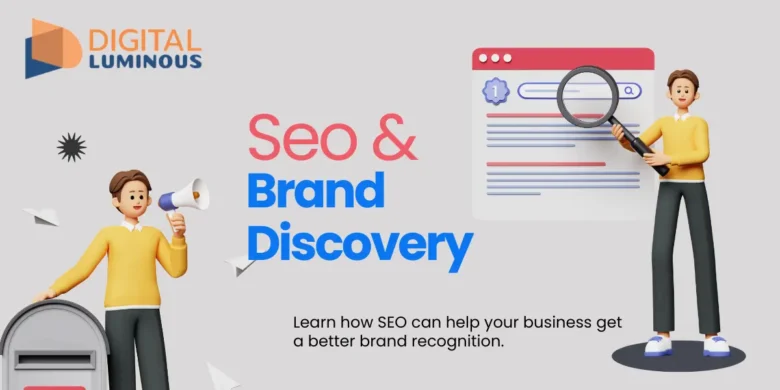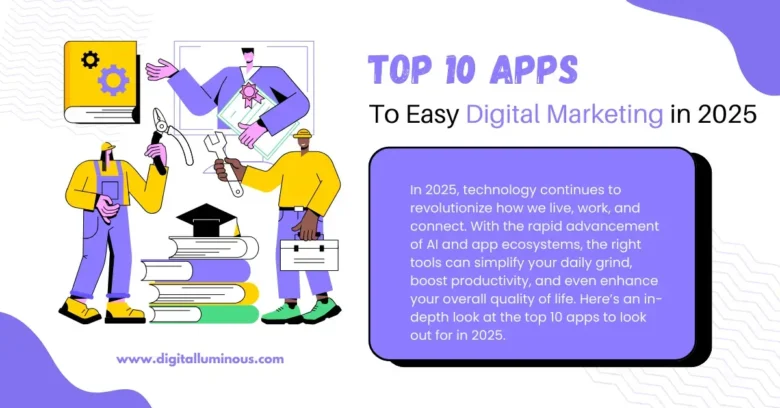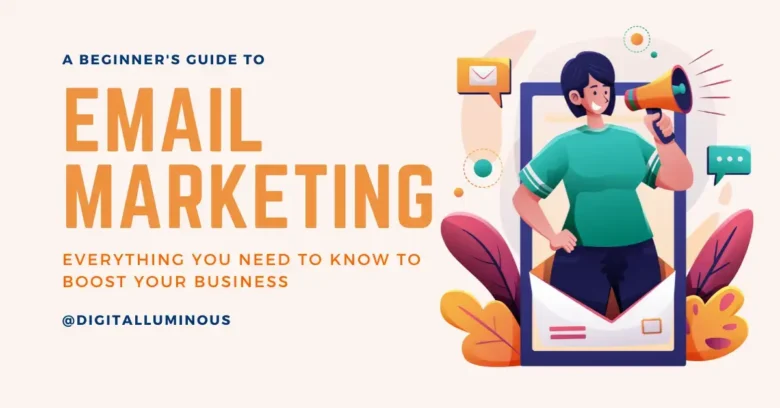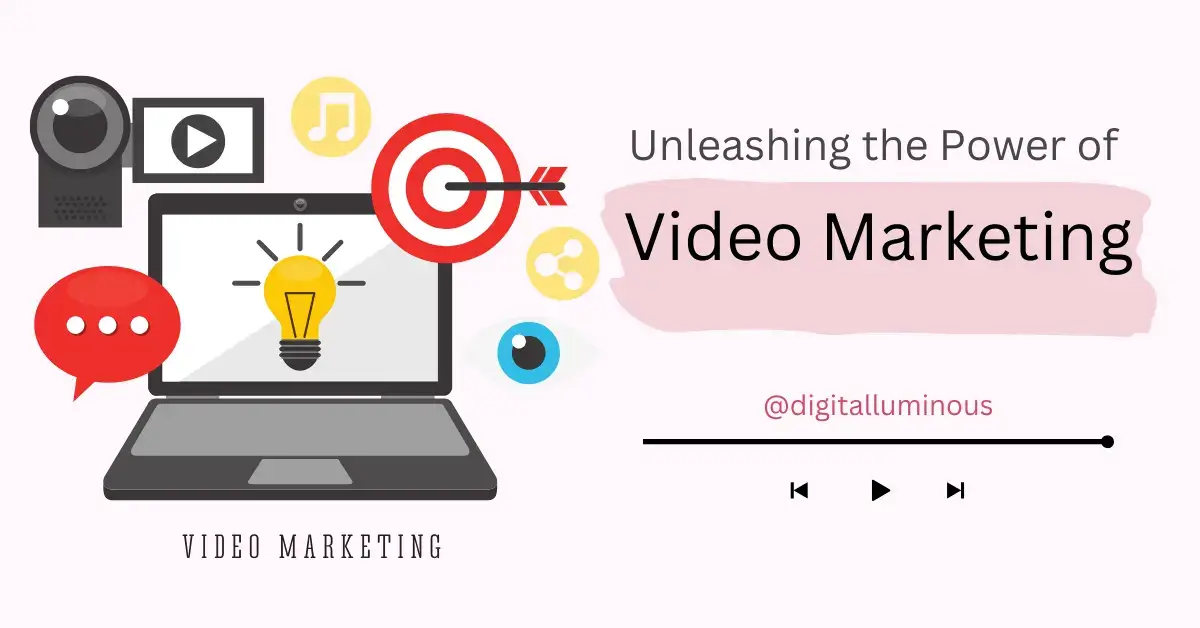
Welcome to the dynamic world of video marketing! In today’s digital landscape, where attention spans are dwindling and competition is fierce, video has emerged as the undisputed king of content.
Whether you’re a seasoned marketer or just dipping your toes into the digital realm, understanding the fundamentals of video marketing is essential for driving engagement, boosting brand visibility, and ultimately, achieving your business goals.
Why Video Marketing Matters?
- Consumer Preference: Video content is favored by consumers for its accessibility and engaging nature. For instance, in the USA, 85% of internet users regularly watch online videos.
Think about Buzzfeed’s Tasty videos on Facebook and Instagram. They share quick and fun recipe tutorials that people can’t get enough of.
- Social Media Dominance: Social media platforms like Instagram and TikTok have transformed how we consume and share videos, making it crucial for businesses to have a presence where their audience is active.
The rise of “TikTok Made Me Buy It” trend showcases how user-generated videos influence consumer behavior.
- SEO Benefits: Video content enhances a website’s SEO, improving its chances of ranking higher in search engine results pages (SERPs).
Neil Patel’s YouTube channel is a good example. His SEO tutorials not only help people but also drive a ton of organic traffic to his site.
- Mobile Accessibility: With the prevalence of smartphones, video content is readily accessible anytime, anywhere, contributing to its popularity.
Snapchat’s vertical video format optimized for mobile viewing caters to users’ on-the-go consumption habits.
- Emotional Connection: Video allows brands to forge deeper connections with their audience through storytelling and visual elements, fostering trust and loyalty.
Dove’s “Real Beauty” campaign uses emotional storytelling to resonate with viewers and promote body positivity.
The Benefits of Video Marketing
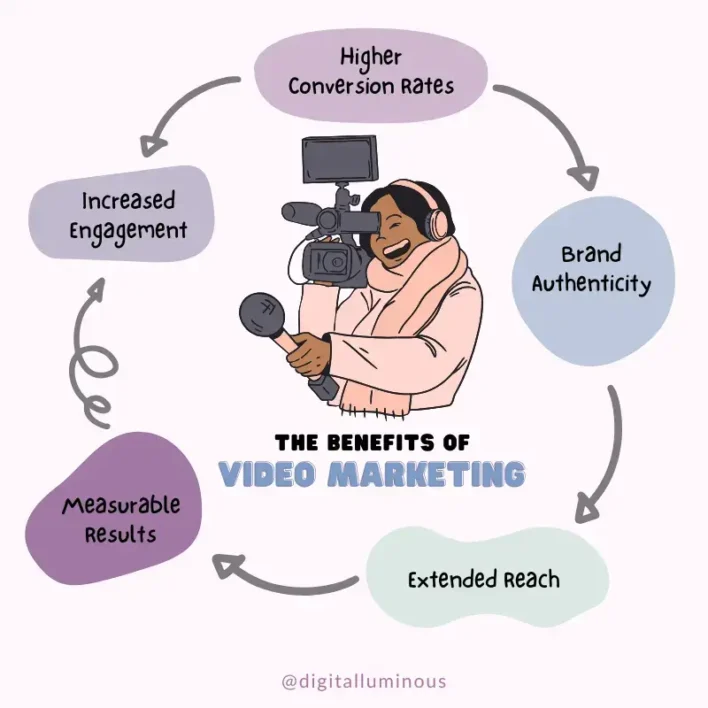
- Increased Engagement: Video content generates higher engagement rates on social media, leading to increased brand visibility and audience interaction.
Wendy’s Twitter account gains attention through humorous video responses, driving engagement and brand recognition.
- Higher Conversion Rates: Videos on landing pages can significantly boost conversion rates by providing compelling visuals and information that persuade viewers to take action.
Dollar Shave Club’s viral launch video effectively communicates its value proposition, leading to a surge in subscriptions.
- Brand Authenticity: Authentic video content allows businesses to showcase their personality, values, and unique offerings, building trust with their audience.
Patagonia’s environmental activism videos align with its brand values, resonating with environmentally-conscious consumers.
- Extended Reach: Videos have the potential to go viral, expanding a brand’s reach beyond its immediate audience and increasing brand awareness.
GoPro’s user-generated content showcases thrilling adventures, captivating viewers and amplifying brand visibility.
- Measurable Results: Video marketing provides detailed analytics, allowing businesses to track performance metrics and optimize their strategies for better results.
YouTube Analytics offers insights into viewer demographics, watch time, and engagement, enabling creators to refine their content strategy.
Types of Trending Video Content
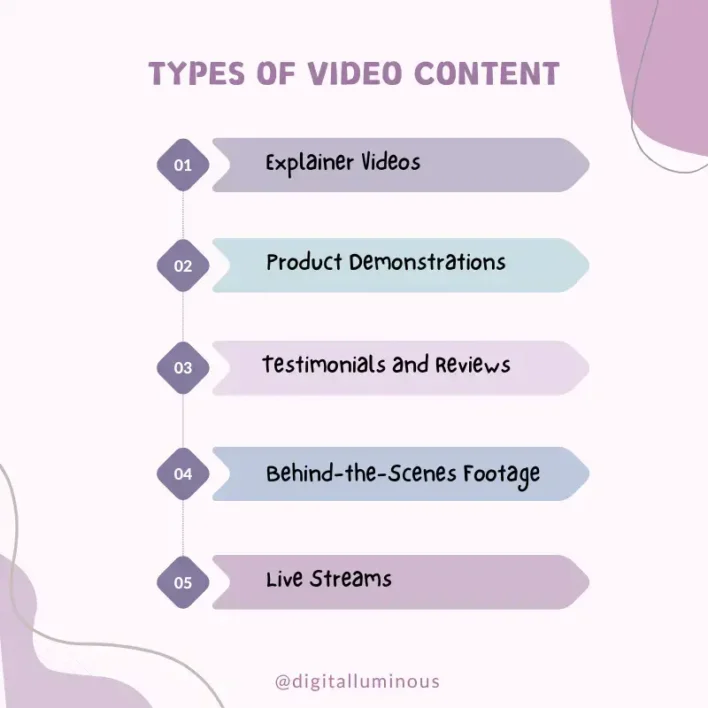
- Explainer Videos: Short, animated videos simplify complex concepts or processes, making them easier for viewers to understand.
Dropbox’s explainer video effectively communicates its cloud storage service’s benefits and features.
- Product Demonstrations: Showing products in action helps viewers visualize their usage and benefits, making them more likely to make a purchase.
Apple’s product launch events showcase new iPhone features, generating excitement and anticipation among consumers.
- Testimonials and Reviews: Customer testimonials and reviews build credibility and trust by showcasing real experiences with a product or service.
Amazon’s customer review videos feature authentic testimonials and product demonstrations, influencing purchase decisions.
- Behind-the-Scenes Footage: Providing a behind-the-scenes look at operations humanizes a brand and fosters transparency and authenticity.
Starbucks’ behind-the-scenes videos highlight its coffee bean sourcing process, connecting with viewers on a personal level.
- Live Streams: Live streaming allows businesses to engage with their audience in real-time, fostering interaction and community building.
Sephora’s live makeup tutorials and Q&A sessions on Instagram provide valuable content and foster customer engagement.
Getting Started with Video Marketing? Follow These Steps
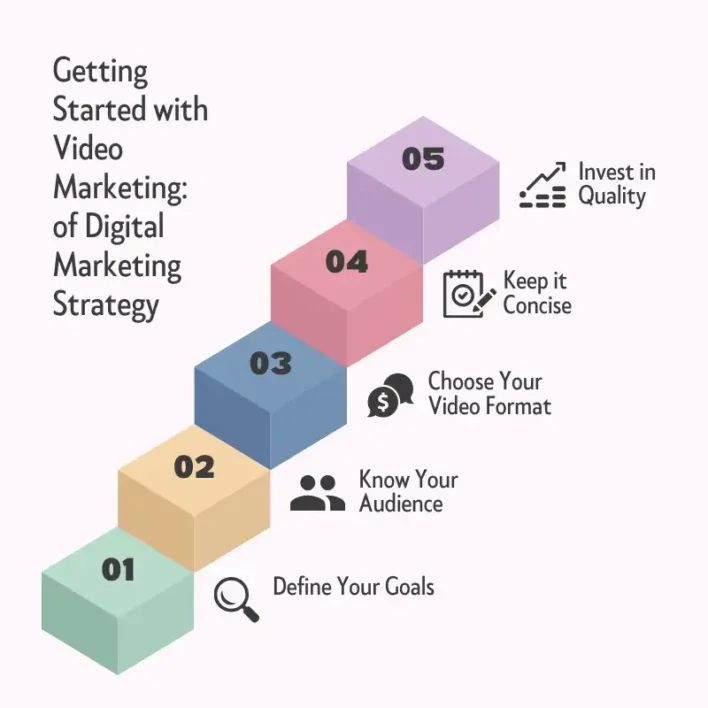
- Define Your Goals: Determine what you want to achieve with your videos, whether it’s increasing brand awareness, driving sales, or generating leads. Clear goals will shape your video content strategy.
GoPro’s goal is to inspire adventure and showcase the capabilities of their action cameras through user-generated content, resulting in increased brand awareness and customer engagement.
- Know Your Audience: Understand your target audience’s demographics, interests, and pain points. Tailor your video content to resonate with their needs and preferences.
REI’s outdoor adventure videos cater to outdoor enthusiasts, providing valuable content that inspires and educates their audience while promoting their brand as a trusted resource for outdoor gear and experiences.
- Choose Your Video Format: Explore various video formats such as tutorials, vlogs, interviews, or animations. Select formats that align with your goals and audience preferences.
BuzzFeed’s Tasty recipe videos utilize a fast-paced, visually appealing format that resonates with busy home cooks, driving engagement and social sharing through easy-to-follow cooking tutorials.
- Keep it Concise: Attention spans are limited online, so aim for concise videos that deliver your message effectively. Focus on quality over quantity.
TED Talks’ TED-Ed series features short, animated educational videos that cover complex topics in under five minutes, catering to viewers’ short attention spans while delivering valuable insights and information.
- Invest in Quality: Quality matters in video production. Invest in good lighting, sound equipment, and basic editing tools to ensure your videos are professional and polished.
Dollar Shave Club’s viral launch video features high production value, combining humor, storytelling, and product demonstration to create a memorable and shareable video that effectively promotes their subscription service.
Guide to Create Compelling Video Content
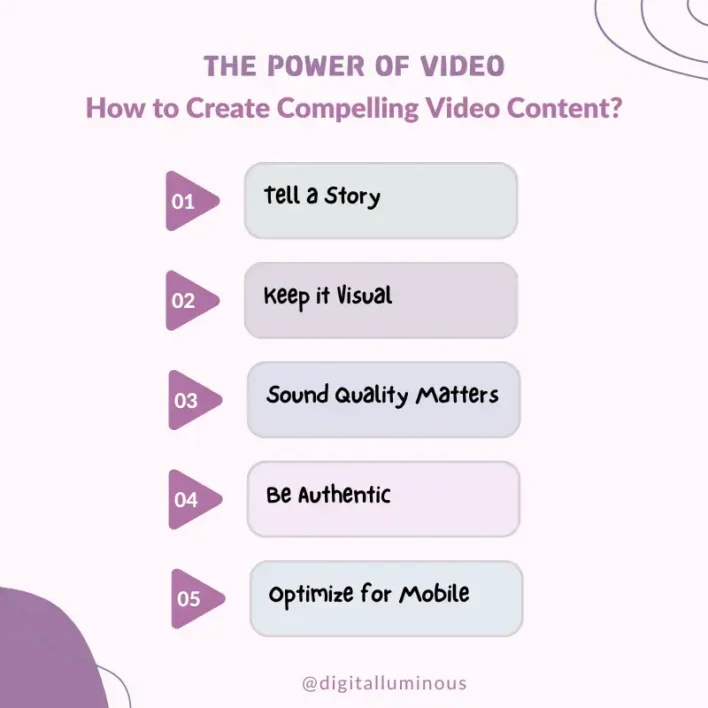
- Tell a Story: Compelling narratives resonate with viewers, evoking emotions and building a stronger connection with the brand.
Airbnb’s “We Accept” Super Bowl ad tells a powerful story of diversity and inclusivity, leaving a lasting impact on viewers.
- Keep it Visual: Visual appeal captures viewers’ attention and enhances the overall viewing experience.
National Geographic’s visually stunning nature documentaries captivate audiences with breathtaking cinematography and wildlife imagery.
- Sound Quality Matters: Clear and crisp audio is essential for maintaining viewer engagement and delivering a seamless viewing experience.
TED Talks’ impeccable audio production ensures that speakers’ messages are conveyed clearly and effectively to the audience.
- Be Authentic: Authenticity builds trust and credibility with viewers, making them more receptive to the brand’s message.
Wendy’s witty and irreverent social media videos showcase the brand’s authentic personality, resonating with its audience.
- Optimize for Mobile: With the majority of video content consumed on mobile devices, optimizing videos for mobile viewing is crucial for audience engagement.
Buzzfeed’s mobile-friendly recipe videos are formatted for quick and easy viewing on smartphones, catering to on-the-go consumers.
Conclusion
Video marketing offers unparalleled opportunities for businesses to engage with their audience, drive conversions, and build brand loyalty.
By understanding the importance of video marketing, leveraging its benefits, creating compelling content, and implementing effective distribution strategies, businesses can harness the power of video to achieve their marketing goals and stay ahead in today’s competitive landscape.
Whether it’s through engaging storytelling, captivating visuals, or strategic distribution, video marketing has the potential to transform the way businesses connect with their audience and achieve success.
FAQs
What is video marketing?
Video marketing is the use of videos to promote and market products or services, engage with audiences, and increase brand visibility and awareness.
Why is video marketing important for businesses?
Video marketing is important because it’s highly engaging, helps businesses connect with their audience on a deeper level, and can drive website traffic, conversions, and sales.
How does video marketing benefit businesses in the USA?
Video marketing benefits businesses in the USA by reaching a wide audience, increasing brand awareness, driving customer engagement, and ultimately boosting sales and revenue.
What types of videos should I create for my business?
Popular types of videos for businesses include product demonstrations, customer testimonials, how-to guides, behind-the-scenes footage, and explainer videos.
How do I get started with video marketing as a beginner?
Start by defining your goals, knowing your target audience, choosing the right video format, investing in quality production, and promoting your videos through social media and other channels.
What are some best practices for creating effective marketing videos?
Best practices include keeping videos short and focused, grabbing attention quickly, telling a compelling story, including a clear call-to-action, and optimizing videos for search engines and social media platforms.
How can I measure the success of my video marketing efforts?
You can measure success by tracking metrics such as views, engagement, click-through rates, conversions, social shares, comments, and return on investment (ROI).
Are there any legal considerations I should be aware of when creating marketing videos?
Yes, ensure you have the necessary permissions for music, images, or other content used in your videos, and disclose any sponsored or paid content appropriately to comply with copyright and advertising laws.
What equipment do I need to create marketing videos?
You can start with a smartphone or webcam for recording, along with basic lighting and sound equipment. As you progress, consider investing in a quality camera, microphone, and editing software.
How often should I post videos for my business?
Posting frequency depends on your audience and goals, but aim for consistency. Start with a manageable schedule, such as once a week, and adjust based on audience engagement and feedback.
How long should my marketing videos be?
Keep videos short and concise, ideally under two minutes for social media platforms. Longer videos can be used for tutorials or in-depth content on platforms like YouTube.
What are some affordable ways to produce high-quality marketing videos?
Utilize user-generated content, repurpose existing content, collaborate with influencers or other businesses, and leverage video editing tools and templates available online.
How can I make my videos stand out in a crowded market?
Focus on creating unique and valuable content, telling authentic stories, showcasing your brand personality, and engaging with your audience through interactive elements like polls or Q&A sessions.
How can I leverage video testimonials for my business?
Encourage satisfied customers to share their experiences on camera, highlighting the benefits and value of your products or services. Use these testimonials in your marketing campaigns to build trust and credibility.
What are some creative ways to promote my videos?
Share videos across multiple platforms, collaborate with influencers or industry partners, incorporate videos into email marketing campaigns, and run targeted video ads on social media platforms.
How can I optimize my videos for search engines?
Use relevant keywords in your video titles, descriptions, and tags, optimize video thumbnails and metadata, and create engaging content that encourages viewer interaction and retention.
What are the benefits of live streaming for businesses?
Live streaming allows businesses to connect with their audience in real-time, showcase events or product launches, answer questions, and receive immediate feedback, fostering deeper engagement and authenticity.
How can I repurpose my existing content into video format?
Convert blog posts into video tutorials or summaries, create slideshow presentations from infographics or data reports, or turn customer testimonials into video case studies or success stories.
How can I engage my audience with interactive videos?
Incorporate interactive elements such as clickable annotations, polls, quizzes, or interactive hotspots within your videos to encourage viewer participation and engagement.
Where can I find resources and tutorials to improve my video marketing skills?
Explore online video marketing courses, tutorials, and resources from platforms like YouTube, LinkedIn Learning, Udemy, or industry-specific websites and blogs to enhance your skills and stay updated on trends and best practices.
